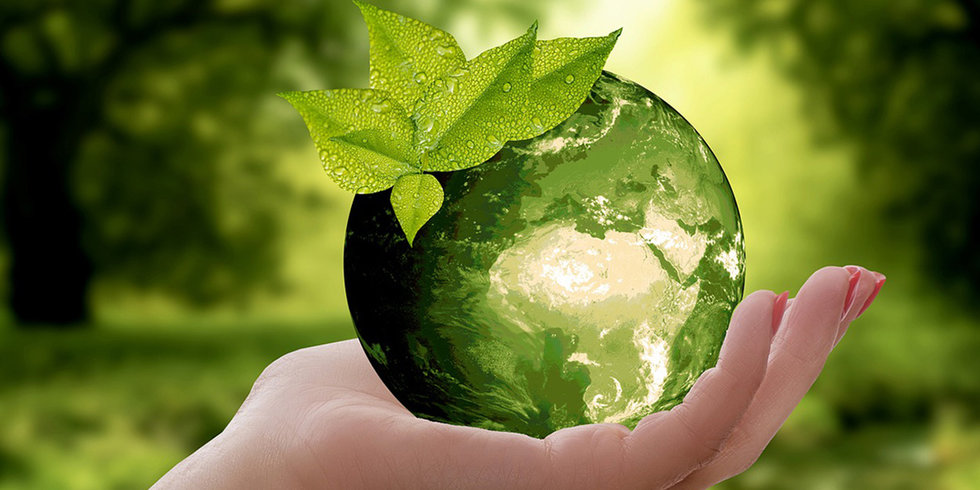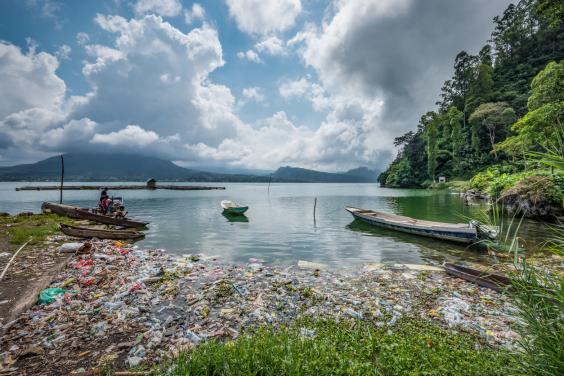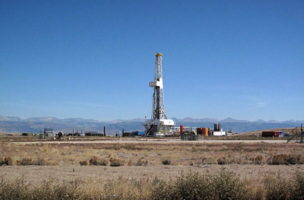EcoWatch
Earth Day Tips From the EcoWatch Team
Lorraine Chow, reporter April 21, 2018

At EcoWatch, every day is Earth Day. We don’t just report news about the environment—we aim to make the world a better place through our own actions. From conserving water to cutting waste, here are some tips and tricks from our team on living mindfully and sustainably.
Favorite Product: Dr. Bronner’s Castile soap
It’s Earth-friendly, lasts for months and can be used as soap, shampoo, all-purpose cleaner and even mouthwash (but I wouldn’t recommend that).
Essential Tool: Blender
It has paid for itself in homemade smoothies, soups, sauces and dips. It also means I don’t have to buy those individual foods in unnecessary plastic containers. Blending scraps helps your compost, too!
Earth Day Tip: Skip the straw
If you feel weird about saying “no straw” at restaurants, just tell the waiter that you’re allergic to plastic.
Olivia Rosane, reporter
Favorite Product: Seventh Generation products
Their household cleaning and personal care products are a great way to take care of yourself and your home in a way that is safe both for your health and the planet. Plus, their packaging is made from recycled materials and is designed to be recycled again.
Essential Tool: My portable thermos
I bring it with me when I order coffee or tea to go. That way I don’t have to use paper cups, which are not actually recyclable, and some coffee shops even offer me a discount for bringing my own container!
Earth Day Tip: Get involved
In 2012, researcher Brad Werner ran a computer model and found our best shot at combating climate change was for people to form a mass social movement to demand it. So if you’re worried about the environment, reach out to other people in your community and talk about what you can do together to make a difference!
Tara Bracco, managing editor
Favorite Product: Collapsible water bottle
Whether you’re traveling or running errands, a reusable water bottle that’s light and compact will help keep you hydrated and keep you from buying bottled water.
Essential Tool: Backpack
It’s great for carrying your groceries home from the store, and you won’t have to use plastic bags. If you have a long shopping list, try a rolling suitcase.
Earth Day Tip: Don’t waste water
Turn off the water while you brush your teeth. It can save eight gallons of water a day!
Chris McDermott, news editor
Favorite Product: Clothes from Patagonia
Patagonia makes a wide range of inspired products and their environmental policies are world class. They use only organic cotton in their clothes, and they even offer trade-ins, recycling and repairs at any time.
Essential Tool: RIVER mobile power station and solar generator
This powerful piece of mind is always ready regardless of storms and travel, for as long as one can tap the sun.
Earth Day Tip: Savor something vegan
There’s no nutritional substitute for fresh, unprocessed food, but food science has revolutionized the taste and texture of vegan alternatives. For the pure delight of it, celebrate with Miyoko’s Kitchen vegan cheese, Tofurky Italian sausage (30 grams of protein per serving!) and SoDelicious non-dairy dark chocolate truffle frozen dessert made with cashew milk.
Irma Omerhodzic, associate editor
Favorite Product: Living Libations’s Everybody Loves the Sunshine
Unlike sunscreen, this skin product works with the sun and helps absorb the nutrients from the sun’s rays while giving skin protection at the same time.
“Rather than being afraid of the sun, harmonize with it,” Living Libations says. Love it!
Essential Tool: My bike
Not only is this an emission-free way to get around town, but it also gives my body the activity it needs.
Earth Day Tip: Start small
Your one “small” action isn’t small at all.
Jordan Simmons, social media coordinator
Favorite Product: Sustainable clothing by Amanda Sage Collection
Designer Lana Gurevich uses patterns from Amanda’s transformative paintings to create an ethically and environmentally conscious clothing line. While supporting local businesses and an eco-friendly printing method, the fabrics are made from 100 percent recycled plastic bottles.
Essential Tool: My paintbrush and set of mineral paints
I found the all natural, biodegradable mineral paints at a local farmers’ market in the Sacred Valley of Peru. I used to favor working with acrylic paints until I learned about their high carbon footprint and harmful substances.
Earth Day Tip: Honor Mother Earth
Gather some of Mother Nature’s gifts such as stones, beautiful dried leaves and feathers. Set them in a special place in your home to create a unique “altar” to remind you to honor your Mother each and every day. Find peace and blessings in loving our home—the earth.
RELATED ARTICLES AROUND THE WEB
Earth Day Tips | Earth Day Network ›
National Geographic Celebrates Earth Day 2018 Across Multiple … ›
9 Easy Earth Day Tips You Won’t Find Anywhere Else | HuffPost ›

 Bali’s popular Kuta Beach has a fair share of rubbish on its shores
Bali’s popular Kuta Beach has a fair share of rubbish on its shores Plastic pollution in Bali’s Lake
Plastic pollution in Bali’s Lake 
 In this Aug. 30, 2013, file photo, Americans for Prosperity Foundation Chairman David Koch speaks in Orlando, Fla. The United Negro College Fund announced a $25 million grant from Koch Industries Inc. and the Charles Koch Foundation, a large donation from the conservative powerhouse Koch name that Democrats have sought to vilify heading into the 2014 mid-term elections. Phelan M. Ebenhack AP
In this Aug. 30, 2013, file photo, Americans for Prosperity Foundation Chairman David Koch speaks in Orlando, Fla. The United Negro College Fund announced a $25 million grant from Koch Industries Inc. and the Charles Koch Foundation, a large donation from the conservative powerhouse Koch name that Democrats have sought to vilify heading into the 2014 mid-term elections. Phelan M. Ebenhack AP Shale production in Wyoming’s Jonah gas field. Credit:
Shale production in Wyoming’s Jonah gas field. Credit: